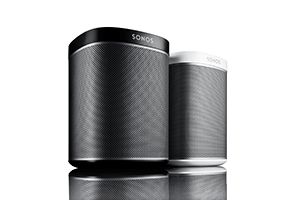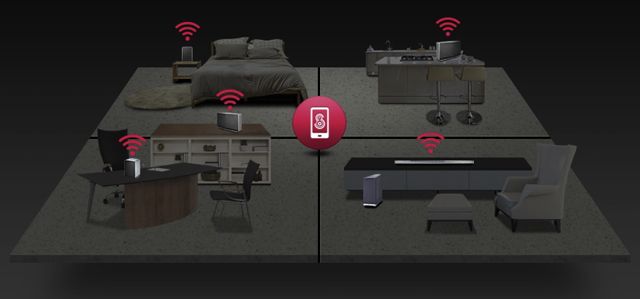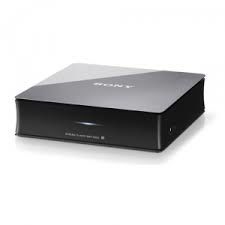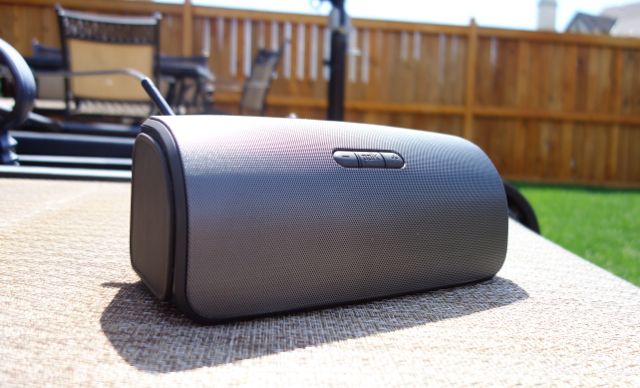 Wireless speakers make up a massive segment of the home audio market today, and there are two options for consumers: Bluetooth and Wi-Fi. While the end result from both is identical, you get to make noise from a speaker that isn’t directly connected to anything; there are some major differences between the two.
Wireless speakers make up a massive segment of the home audio market today, and there are two options for consumers: Bluetooth and Wi-Fi. While the end result from both is identical, you get to make noise from a speaker that isn’t directly connected to anything; there are some major differences between the two.

Bluetooth
Bluetooth technology represents a direct connection between two distinct devices, in this case the wireless speaker and your smartphone, tablet or laptop. You have control over the music being played and the volume, driven by the existing musical library on your device. The limited bandwidth of Bluetooth is only capable of streaming MP-3 or other highly compressed music, and require the speaker to be close to the source, usually 20-30 feet maximum.
Bluetooth is a great option for a speaker that you want to take it with you once you leave the house, but is undeniably inferior if the intent is to use it primarily in your home.

Wi-Fi
The shift towards Wi-Fi enabled wireless speakers is well underway. There are dozens of options on the market currently, from major players in the loudspeaker market to new brands, looking to capitalize on the demand. There are a number of compelling reasons why Wi-Fi speakers are superior, and I will outline them below.
Multi-room sound

I love the multi-room capabilities of Wi-Fi speakers. Creating a whole-home audio system, and having complete control over it from the palm of your hand through a smartphone app, is a revelation in wireless speaker technology. Some platforms allow for different music to be played through different speakers simultaneously, and all of them will broadcast the same signal throughout your home, seamlessly enveloping every room in sweet sounds. Check out the options available at Best Buy here.
There are some manufacturers that are designing products that can also be used outdoors and are able to withstand the elements to ensure you can enjoy your music outside.
Multi-device streaming
Not only will a Wi-Fi system allow for multiple speakers to pump out different music and all be controlled by one smartphone or tablet, but you can also set it up to be used with multiple devices. Have kids who want control their own music in a different room? Give them that control with their own device, and everyone wins.
Bandwidth
The increased bandwidth of Wi-Fi offers allows for more information to be streamed wirelessly throughout our homes. If you think of bandwidth as a pipeline, Wi-Fi offers a pipe that is ten times the size of Bluetooth. This opens up the door for higher resolution audio files to be streamed throughout the home, resulting in higher quality audio.

Bit Rate
Digital music is highly compressed, whether that is on a CD or MP3. The greater the compression, the greater the loss of detail and dynamic range. While some consumers may not be able to detect much of a difference between music being broadcast at CD compressed (16 bit) vs. uncompressed (24 bit) rates, the science behind high res audio is compelling. Higher bit rates allow that detail and dynamic range to be brought back into our digital musical experience. Due to the increased bandwidth of Wi-Fi, as consumers we have the option of streaming higher bit rate music, something Bluetooth cannot offer.

Stream from a media server
One of the self-imposed streaming limitations I have created is the size of the storage in my phone. I don’t have the space for the 60 GB of music I have in my iTunes library on my phone, much less any movies, and I like having access to my music, not just the few playlists I keep on my phone. With Wi-Fi, you can add a media server to your home network and access the files from it for playback, rather than having to take up valuable space on your smartphone or tablet.
Stream from music services
Utilizing Wi-Fi allows us to tap into the vast music streaming services available today. Whether you choose Spotify, Google Play, Pandora, Rhapsody, SiriusXM, internet radio, or one of the many others, with Wi-Fi you are not limited to the music you currently own in your personal library.
Many of these streaming options come complete with a wide array of playlists that have already been created for you, and are suited for virtually any situation. Working out, mellow background music, today’s hits, dance parties, office music, you name it, someone has created it, and you can access them all.
Range

Open your Wi-Fi settings right now and you will find pretty much all of your neighbours networks as options to connect to. Many of them will be hundreds of feet away. The range of your home network is quite large, and extends beyond the four walls of your home. A Wi-Fi home audio network provides you with about 100 feet of range indoors and upwards of 300 feet outdoors. After experiencing this flexibility, the 20-30 feet of range you get from Bluetooth will feel like cold hard shackles. With Wi-Fi, you can actually keep your phone in your pocket as you stream music rather than leaving it next to your Bluetooth speaker in fear of the connection dropping. You can also take calls, text or email without any sounds transferring to your speakers.
While there are numerous benefits to Wi-Fi speakers, there is one caveat that I should flag. The strong majority of Wi-Fi speakers require AC power, meaning you will still have to plug them into the wall. There are a few options that are rechargeable and therefore become completely wireless, one of which I reviewed here, and options that allow for both Wi-Fi and Bluetooth capability that I reviewed here.
As wireless audio continues to evolve, the wireless speakers that are Wi-Fi capable will be able to receive firmware upgrades online, and the apps that control them will continue to advance as well. While there are benefits to Bluetooth technology, the portability being tops on my list, when it comes to deciding which wireless speaker to invest in for your home, Wi-Fi wins hands down.



